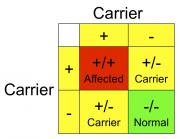 Recently, the discovery of the PRA-gene has been dicovered in a few cats within the Savannah breed. These cats are from A1Savannahs lines and are A1Savannahs cats with several cats in the ancestry which we, as breeders, are all likely to have in our pedigrees. The concern is that finding out where these cats are currently located to be able to test will be a collaborative nightmare between breeders and pet buyers. Some of the cats are even now deceased and unable to be tested. So what is PRA and why do we need to be concerned? PRA is the shortened version of the disease Progressive Retinal Atrophy and this gene means that a mutation, which is scientifically labelled as rdAc occurs in the CEP290 gene. This means that a deficient protein that is associated with progressive retinal atrophy (PRA) in the Abyssinian cat and related cats. Usually, clinical signs typically become evident between 8 and 20 weeks of age and the disease progresses so that by around one year of age complete retinal degeneration is apparent in most cats according to Ofri R, Reilly CM, Maggs DJ, et al. Characterization of an early-onset, autosomal recessive, progressive retinal degeneration in Bengal cats. Invest Ophthalmol Vis Sci. 2015;56:5299–5308. The problem is that this is not always the case as more research is being done, a lot older cats have the gene but haven't yet shown any signs of the disease. (Langfords Vets, UK) PRA is a disease which affected the sight of cats. The photo receptors start to deteriorate in the retina and affected cats develop 'late onset blindness'. This is usually detectable, I am advised by Langfords Vets, usually by 3 to 5 years of age. Worryingly though, it may not be detectable until they are aged 6 or older. The problem for many breeders who have retired and sold breeding cats at 2 or 3 years old is that some of the pet buyers are unknown to the breeder by the time the cat turns 7 (4 years later!) or if the cat shows any signs of blindness, the buyer often will not contact the breeder to let them know, leaving them blissfully unaware that there is a problem in the line. Some owners may also put sight deterioration down to old age, even though it is actually a defective gene which the cat possesses. It is very important to know that the age of disease onset and progression can be variable and some affected cats may not develop clinical signs, and eventually blindness, until later in life. Is this the same as PRA-B? PRA-B is the gene for the same disease which has been identified in the Bengal breed. You will often hear Bengal breeders saying "PRA-B Normal" in their cattery information or on their kitten adverts. This means they have screened their cats and are only using normal breeding cats in their programme. Langfords Vets gave me very detailed information about this disease on the 30th of January 2017. They stated that is works in exactly the same way as PK Deficiency (see here) and carriers should not be bred together which has recently happened, producing affected kittens. Important Point A lot of Savannah breeders are still in their infancy of their 'breeding career' (under 10 years) and so therefore, it is difficult to discern IF we have a major cause for concern within the breed or if it is something we can eradicate from a few lines within a few generations. How many cats are realistically affected and what do I do about it? By January 30th 2017, Langfords Veterinary Laboratories in the UK had performed tests on 309 Savannah Cats for PK Deficiency and a grand total of 0 (zero) tests were performed for PRA and 0 (zero) for PRA-B. They were happy for me to publish this data. I am currently awaiting UC Davis (University of California Laboratory) to respond to me with this data. They will now have all of our swabs to process, the first Savannah's in the UK to be tested, and can only identify certain markers or breed-specific problems if we all test for this defective gene. Breeds known to be currently affecting by PRA are: * Abyssinian * American Curl * American Wirehair * Balinese * Bengal * Colourpoint Shorthair * Cornish Rex * Javanese * Ocicat * Oriental Shorthair * Siamese * Singapura * Somali * Tonkinese We all have several of those breeds behind our Savannah's and then some....! Langfords advised me that as Bengal cats have such a heavy influence in the early lines (and some current) of the Savannah breed: "ALL Savannah breeding cats would definitely benefit from the PRA and PRA-B test. It's a simple swab and we can re-use DNA already stored on the system provided we have received the sample in the last two years". I would like to publish our data once it comes back for the testing carried out on our cattery and at present I am hoping that we have all normal cats. I will also publish the full list of the cats in the pedigree of the rdAc/rdAc (Affected) cat which has recently been discovered and is now in our possession. This is aiming to encourage all breeders with those cats in their pedigree to test as soon as physically possible to prevent any other kittens being produced as carriers or affected. So what do I do if my cat is positive or a carrier of PRA? Well, that it entirely at your own discretion but please be responsible for the sake of the breed and the animals. We found out about PRA in Savannah's after recently bringing in a male this month who has tested as "affected - rdAc/ rdAc - positive". We have not used him yet and what brings my concern is that he is an F6 SBT and has basically a whole pedigree of A1Savannah cats. So where did it come from? We all know that old A1Savannahs pedigrees aren't all true to word and may not even be the cats that are on them flowing through into current pedigrees on cats, or so I have heard through close relationships with breeders, so realistically we can't really be sure that we will know where it's come from. What we can do though, is we can work together to eradicate it before it does become an issue, especially something that takes years to show up in most cases. If you have a homozygous cat then it is AFFECTED = rdAc/ rdAc = Positive and will develop the disease at some point in their life. If you have a heterozygous cat then it is a CARRIER = rdAc / normal = Will not develop the disease but can pass on the gene. It should not be used for mating with another carrier as there is 25% chance of producing affected kittens and 50% chance of producing more carriers. If you have a normal cat then it does not have the gene. But the Savannah isn't related to the Abyssinian, Siamese or any other cats? Well, theoretically we don't actually know how many have been used, given that the first cat within the breed was actually a siamese mated to a serval for the first F1's. Another issue is that a lot of cats are registered as DSH (domestic shorthair) when they are in fact other breeds, to prevent knowledge of the actual outcross used. This was commonplace years ago when the breed was further developing. What does it mean for our Savannah cats? For many of us, it may mean nothing as you may have normal cats in your breeding programme. Some breeders may have carriers of the PRA gene but not be mating them to normal, therefore producing affected or positive kittens. What next? Result = Positive Option A: Neuter or spay the cat. Option B:
It is not advisable to knowingly bring a PRA Affected cat into your cattery. Result = Carrier (Heterozygous) or rdAc/Normal Option A: Neuter or spay the cat. Option B:
Result =Normal or Normal/Normal (N/N) Your cat does not have PRA and therefore is able to be bred from without worrying about PRA. It is advisable to check for PRA in any cats you use for breeding moving forward. A careful breeder is a wise breeder. Here are the cats which are contained within the pedigree of one known affected cat so any number of these cats could be the source of the PRA defective genes being passed on.
SERVAL KITTENS UK We have a crazy waiting list at the moment for boys. As much as we love getting to know you all and chatting with you in PMs, without a copy of your licence, we cannot legally sell you a serval. We also expect you to have gained a reasonable amount of knowledge either through our website http://www.stylisticat.com/blog/dwa-licence-questions or other avenues, understand basics on what serval dietary requirements are, the specialist veterinary care you require, imprinting process and if you plan to become a licensed carrier to take them to the vet in your vehicle (yes you need a licence for that too) and when our baby comes to you it needs to be their forever home and had experience either visually or at another owners. http://www.stylisticat.com/blog/dwa-licence-questions In the UK, you need a DWA Licence to own a serval and this means a secure enclosure approved by your local council for a Dangerous Wild Animals Licence. The pictures you see of them in the family home are not generally allowed in the UK, unless a breeder is licensed for one room within the house. To save us replying to all your private messages and e-mails individually with the same response - If you would be interested in a serval from us and want to be on a waiting list then we ask all persons to send us a copy of their licence and pictures of their enclosures to contact@stylisticat.com. We could sell these cats 5 times over to unlicensed homes but we are responsible breeders who are most interested in the welfare of our cats. Your cat will be seized without a licence. We will not sell a serval to breeders of Savannahs with less than 3 years breeding experience, this to ensure you are truly in it for the long haul. And are you ready to give up your holidays away from home? Your baby will need you and that could possibly mean only you! We won't ship them outside the UK> 16-30 weeks is too old for them to imprint. We won't fake dates on vaccinations to enable you to get them overseas very young like breeders in Ukraine, Belgium other places in Europe and Russia. Chances are if you get CITES paperwork it will be fake as there are no CITES for a serval to the UK from the EU. Check the CITES, does it say Savannah when it's supposed to say serval?... "But they are cheaper overseas". Yes, they are a lot cheaper but there is a reason why our prices are what they are. Importing a serval or a cheap F1 Savannah to the UK means:
This is why buying from the UK makes all the difference as we make sure that your serval is with you in time to imprint on you. You become their one and only. We will give you guidance on settling in. We will give you a lifetime of love and support. We will give you a very special piece of our hearts. We will give you a very socialised baby serval which has been raised properly. We will deliver to your door. (We like to have a look at where they are going to live). We only want the best for our babies and to make sure that you are going to be dedicated for the next 20 or so years to this wonderful animal that you would like to take home. Some say we don't even want to sell them because we are so rigorous. We think that if you want a serval to be your world for the next 20 years then getting your licence is only the start. Our clients are those who are dedicating their lives to these animals, who are eager to learn and ready to take on the highs and lows of owning a truly magnificent wild animal. "We're not saying it will be easy but we're saying it will be worth it."
- Kayleigh @ Stylisticat This post is to prevent timewasters. Thank you for understanding. >SERVAL KITTENS AVAILABLE< F1 Savannah Cat for sale....no, not worded correctly. I’ll try again. Beautiful F1 Savannah Cat who loves her Mummy and her other F1 friends so much but not the serval she lives with.... Not really the ideal sales advert or the ideal solution for either the cat in question or myself. Owning early generation hybrids and wild cats means that you really do need to be responsive to their needs and change things to suit them where possible. Sometimes when a group have been friends through a juvenile period, after becoming Mothers themselves or even approaching adulthood, the hormones can really upset the balance in a cattery environment, even in large enclosures. We always aim to keep the cats occupied through various enrichment experiences and change things up regularly within their enclosures. Sometimes when the cats take a dislike to each other, they can stay in their “mood” for weeks and even months at a time. You, as a responsible owner, must take the sufficient steps to ensure there is a balance at all times. Emira our F1 Savannah has always been the most stand-off-ish out of our F1’s and a bit less predictable. She was completely un-socialised when we got her, which meant she was absolutely terrified to come near us. Our advice when we received her was, “here is some Supermarket branded pouches with gravy, she likes those best and kibble along with a couple of mice”. I kept her on the Tesco value sachets and biscuits for the first few weeks as I didn’t want to make her feel even worse. We then moved to what she should’ve been on and that was raw meat. The breeder had also kindly included a blanket – for comfort of smell you would think? No, the blanket was for picking her up with, it was for our 'protection', not for the comfort of the kitten. We were advised not to look her in the eyes and put the blanket over our hands before picking her up, ideally from her backed into a corner so we could control her spitting fit. “She is an F1” we were told. “This is what they are like at 10 weeks, totally wild but will come round through time”. Emira was our first F1, we were very naïve and didn’t realise that she was far from what a socialised and loved F1 should be like on arrival. Thankfully all our other F1’s were raised in the family home and loved dearly before they came to us. They purred! Purring is something we never got from Emi until she was with us for about 6 months. I wouldn’t give up on her. After time progressed Emira came round, never really enjoying male human company despite the endless nights of playing without eye contact and reaching out to her without force from my Husband. She has always been so striking in looks and produced lovely kittens for us. She got on with my female serval so well when she was introduced as a playmate as a kitten. They played great together and even slept beside each other in the indoor sleeping house. After Emira had kittens, she decided she didn’t like the serval anymore. The serval grew bigger and Emira just ‘felt different’. We resisted the sale of Emi for so long and tried changing the cats round, but then it left everyone else upset. She gave my serval a hard time and then as the serval grew, she got it back twice as hard. “I’ll have to rehome her, it’s the only option to rework the balance”, I said to Gordon. “She just hates this serval and I don’t know what else to do”. I asked a breeder who owns Emira’s sisters at her cattery and she said, “I don’t want her. We have enough problems with her sisters!”. I thought, well, at least Emira is not causing any problems when she is not with the serval, so that is a bonus! F1 Savannah cats are notorious, along with servals for imprinting on one (to two at the most) human. They do this from a young age, within the first few months of their life and that is why getting an F1 no later than 12 weeks is advisable. Getting an F1 after 12 weeks old could be too late and mean that they won’t accept you without a tremendous amount of work, sometimes to no avail. Moving them to a new home can be catastrophic for them and the new owners. I had heard this for years from several breeders, namely of servals and F1's, where they said they would keep all their cats for life…until recently we were told that several breeders cats had been offered for free as an “off-load” to make way for new cats. Along with advice on how never to advertise on certain listings and just to give them away cheap to make it look like you are in demand. They advised me on not selling cats unless they were excellent type and to give away those ones less than perfect, which would ensure your image was perfect because of the way of customer perception. “Everyone is full of shit”, I thought. "I'm my own person, honest, first and foremost and I can make the right decisions for my own cattery". The people who have done this for way longer than us, that preached the best way to care for early generation hybrids and wild cats in the beginning, were doing exactly what they told us never to do - rehoming! You now see their own advice not applying to the person giving it but happy to deceive everyone through hiding the less-than-perfect parts of breeding. I thought to myself, who-ever I decide to home Emi with must have vast amount of experience and be willing to put in the work to bring her round to trusting them. How else could we work out the situation to accommodate, most importantly? But who can I trust? I reluctantly advertised her. The advert was the largest post I have ever written for an advert on a cat for sale. I boasted about her type, my darling baby, so perfect in every way, the perfect cat. “Doesn’t get along with my serval”, I wrote. I thought this is absolutely killing me. I received loads of e-mails every day about her. People saw it as a bargain. “I don’t have a licence but I’ll get one, how much is it?” “I breed blue puppies because I get £1,000 more a puppy than regular puppies – breed removed- so I’d like an F1 Savannah 'cause they make the most” “I’ll give you X for her as she is less valuable than a kitten” It was ALL about money, no-one had a *swear word removed* care about the difficulties in mating F1's. How can I even consider discussing the TYPE of home on offer when we can’t even get past the financial ‘interest’. This isn’t working. To be honest, she is a really friendly F1 now when she is not kittening and I had no concerns with her temperament on a regular day. No-one was really ever going to understand the difference of an F1’s temperament when they have kittens and how to suit/ adjust things to suit an F1 queen which has kittens, when they were more interested in the financial outcome of such kittens. And what happened when they realised how hard it can be to produce F2 kittens or to have live F2 kittens even AFTER a mating has been successful? The thing I most interested in for my F1 was TRUST. We sat on the bench one evening, as we do, while I have a cup of tea and a chat with the early generation Savannah girls. They know all my stories and secrets. They chat back to me. Emi was reaching up and pawing my face so I would lower it in order for her to reach and give me a head bop. “Ma-ma”, she meowed and I just burst into tears. I just can’t let my girl go. She is my child and I am her Mother, her world. I have to make this work, there must be another way. Revelation moment and total re-evaluation of the setup. We pulled together and brain-stormed, drew up plans, put ideas across to each other. Emira has a new fantastic enclosure pictured above where she now lives happily with some of our other F1’s, her best friends. The plans were drawn up, the enclosures were all re-worked and within 2 weeks of re-working it all, the equilibrium that we once had, was restored. We now have other enclosures drawn up to ensure that we can move any more girls if required. They are our babies and I couldn’t ever imagine them going anywhere else. Hallelujah!!! What do you think of your new enclosure Emi? She just looked at me, just like in this picture below. "I am home", she said with her eyes, then smiled. F1 Savannah Cat "NOT" for sale. #savannahcat #f1savannahcat #savannahcatforsale #f1savannahkitten #savannahkittens #hybridcats #hybrid #servalcats #servalcatforsale #servalsintheuk #savannahcatsuk #savannahinGB #Stylisticatsavannahcats #catoftheday #instacat #stylisticathybridcats #hybridkittens #hybridownership
With the holiday season coming up I thought it was relevant to share general advice on travelling with your pet. Some of you may decide to put your cats into kennels during your holiday. The aim of this advice is to help your pet be the most comfortable on it’s travels. This can also be relevant if you are purchasing a kitten and want it delivered throughout the UK or internationally. CarriersSize Make sure it is a suitable size for your pet. It should be big enough for your animal to stand up and turn around in without feeling cramped. It should be long enough for them to lie down in and a have a nap. Fresh Air It should provide fresh air to the animal inside and is one of the most important factors to prevent it getting to hot on it’s journey. Safety The carrier should be escape-proof and is better if it means the animal is unable to stick their paw or head out of. There are new plastic fronted carriers which are sturdy and prevent the paw injuries which can occur in general mesh fronted carriers. It is always best to use IATA approved carriers. This means they are deemed safe for use in flights. Always strap your carrier down in any transport situation. Absorbent Bedding We prefer vet bed for travel but it can be messy. The best thing on the first few hours of your journey is puppy training pads as these can easily be put into the bin and replaced if a toilet break has been required. Generally after a few hours the introduction of your pets favourite blanket or bedding can help relax your animal and encourage them to nap the journey. Litter tray on not? We use extra large carriers on our long distances. This enables us to have a litter tray and a bed side by side. This is to make sure that the cat feels comfortable to be able to go to the toilet. Access to Water and Food Bowls which clip onto the carrier are the best as this way they are unable to be stood on or knocked over. They are very cheap to buy and some even come with the carrier as standard. Your pet may not feel like eating or drinking but water is the most important offering on a journey because the stress can make your animal become dehydrated, alongside the heat. Familiarity Make sure you leave the carrier beside the animal a few weeks before the journey to ensure it has their scent and the have got used to the idea of going inside it to nap. We also offer food inside it so that the cat feels comfortable eating inside – this encourages them to eat on the journey. Toys inside also help them feel safe. GENERAL ADVICEPlan ahead. Feed well in advance Feeding animals right before travelling is not adviseable as not only will this encourage travel sickness, but the potential is greater for toileting and vomiting. Always Crate Even with a dog, they are better to be transported in crates. Animals can be distracting in a car and if there is a vehicle collision, your animal could go through the windscreen or cause a deadly injury to a passenger (yes even cats too). The force of an animal projected through a vehicle in a collision can be deadly to the animal and passengers. Heat If travelling in the car then try to ensure you go on the coolest part of the day. This will make the trip more comfortable for all involved. Stops Ensure stops are minimal and the time that your animal spends alone is minimal. Are you insured? Some car insurance policies don’t cover you for travelling with a pet unless they are carried securely. Some don’t cover you for carrying a pet at all. Check. Supplements Some pets can benefit from a special proven supplement which can help with the stress of travelling. Ask your vet about this product or contact us for advice. This product must be started in advance of your travel to ensure it has started to work. Travelling by: CARPractice Try to take your animal on short trips first to show them that it is okay to travel and they don’t need to be scared. Reward them after each trip with attention and treats. Make it a happy, enjoyable experience where possible. Secure your animal It is the law in the UK to restrain an animal and prevent them from distracting you whilst driving. For dogs, you must use a dog guard to prevent them from coming into the back seats from the boot, or an appropriate crate. DO NOT LEAVE ANIMALS IN HOT CARS even for a few minutes. It only takes a few minutes for a car to double the temperature of the outside. Take regular stops Cats and dogs prefer to drink when stationary and dogs prefer to do the toilet outside! You can also change pads and food at stops for cats. PUBLIC TRANSPORTCompliance You can usually take animals on all public transport, even dogs. Check in advance. Carriers Always take animals in carriers where possible to prevent escape or discomfort. Time of day Try to avoid busy periods as this will reduce the stress to both you and the animal. Take poo bags in case you need to do what we all wish we didn’t have to – clean up poo!! BOAT/ FERRYUsually you can pay a small fee to have your animal on a pet passport, travel on the ferry with you. You usually have to leave them in the car and may only have select times to return back to the car to check on them. If it is very hot you may decide not to travel to prevent risk to your animal as you will have to leave them in the car. The car decks can be noisy so it is worth getting a supplement for your animal before travelling to reduce stress. See above. Fresh Air Make sure the carrier is well ventilated and if possible, leave the windows of your car all slightly open. Make sure the animal can’t escape from the window! AIRAlways check with the airline for their individual requirements on your pets travel. In the UK it is not permitted to have any animals in the cabin and they must go into the hold. Some pet owners decide to drive out of the UK and fly from the EU to enable them to fly in the cabin with the owners. This applies to all our kittens. We cannot ship a cat to you in cabin unless you wish to collect from anywhere out of the UK. Additional fees may apply. Carriers must be IATA approved. COURIERSometimes it may be necessary to have a courier transport your animal for you. We always recommend fully vetting your courier before paying any deposit or in full before having them transport your kitten. There are many things you should consider when selecting a courier for your kitten. Firstly, is the animal insured to be travelling with the courier? Are they giving you a contract for the transportation of your animal? Will the animal be alone or travelling with other pets? What's the infection control process to ensure your pet is kept safe and secure from infectious diseases? Do they have secure carriers for your pet? If they are transporting a DWA animal - do they have a carrying licence for the animal? We are Defra-Approved registered carriers for the transportation of Dangerous Wild Animal cats and can carry rabies-risk/ quarantine cats. Generally, we hand-deliver all of our kittens where possible and collect any new cats ourselves with relevant paperwork for border control inspection. Passport and PaperworkYou must have a passport of equivalent paperwork for your animal you wish to travel with, import or export. Generally most animals fall into the Pet Travel Scheme set by DEFRA, the UK Government, but it is worth bearing in mind that some do not. In order to cross the border at some countries you may also require an additional licence granted by CITES. The purpose of the passport is to make sure the microchip matches the passport and vaccinations are up to date. In our case, for Savannahs, you can import and export anything to/ from the UK with no CITES required provided it's within the EU. A brief guide below:
Wild Cat Transportation, Import/ ExportWe are often asked about importing cats into the UK because they are less expensive abroad (see hidden fees below!). The same rules apply to wild cats as it does to F1 Savannahs. You must have a carrying agent transport your cat.
So, although there are cheaper cats such as £4,500 for a wild cat in europe, by the time you import the cat and pay for the quarantine it will cost you anything up to £9,000 in Scotland and £10,000 in England after all the fees. Most importantly, the cats cannot enter the quarantine until they have had a rabies injection at 12 weeks old (no earlier) and waited 21 days. The cat will arrive into quarantine at 15 weeks old and undergo the most important bonding period in isolation. The cute kitten you originally purchased, will arrive to you around 8 months old (almost adult size) and may not be approachable by you as it's new owner. It is not good for the cat or you as the new owner. Do you really want to miss out on those bottle feeds and special bonding suckles? The above is to demonstrate the substantial cost of importing these animals and why the kittens from such animals are therefore more expensive in the UK than in Europe and USA/ CA. -
|
Welcome | Welkom | Ben arrivata | Velkomst | Tervetuloa | Bienvenue | 欢迎 | Willkommen |
ようこそ!| Sveiki | Добро пожаловат | Välkomna | Velkommen | ยินดีต้อนรับ | خوش آمدید | 환영 | AuthorAll about Stylisticat, written by Kayleigh McIntosh-Lowrie Archives
February 2021
Categories
All
|
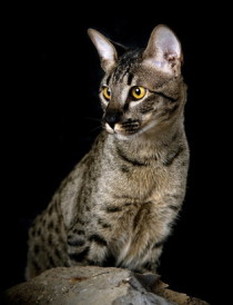

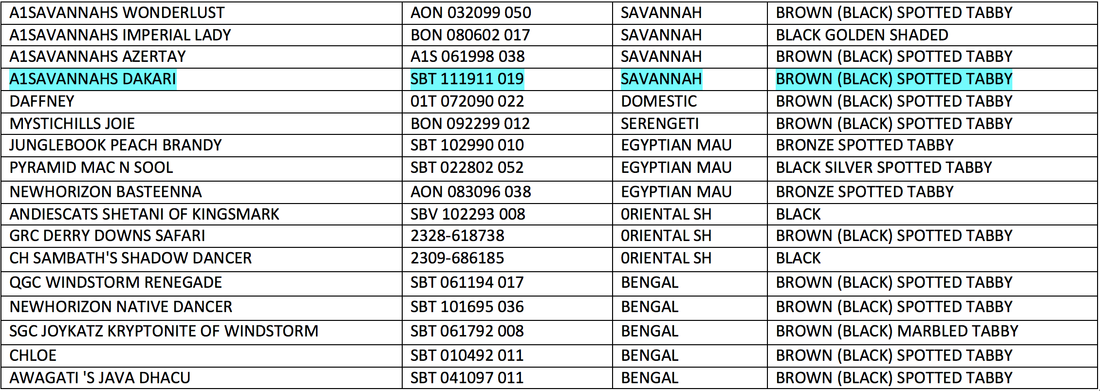


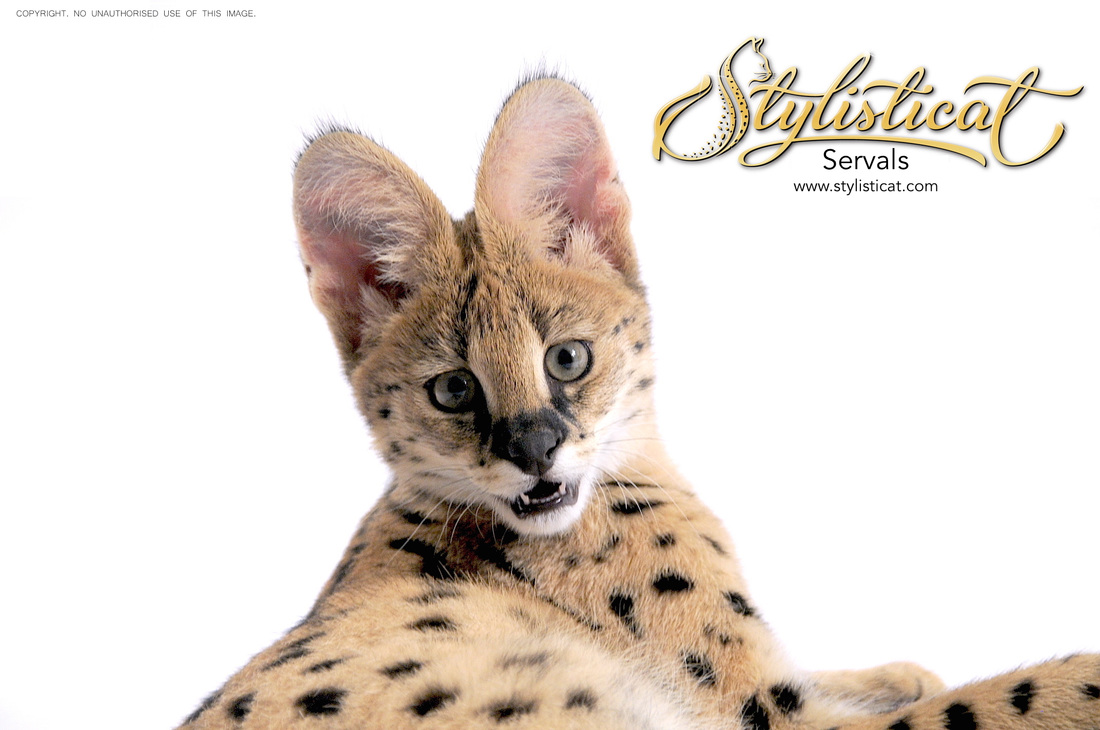
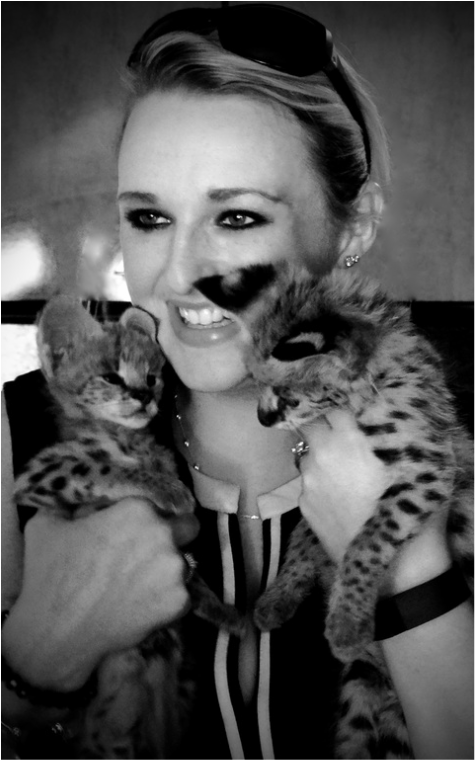


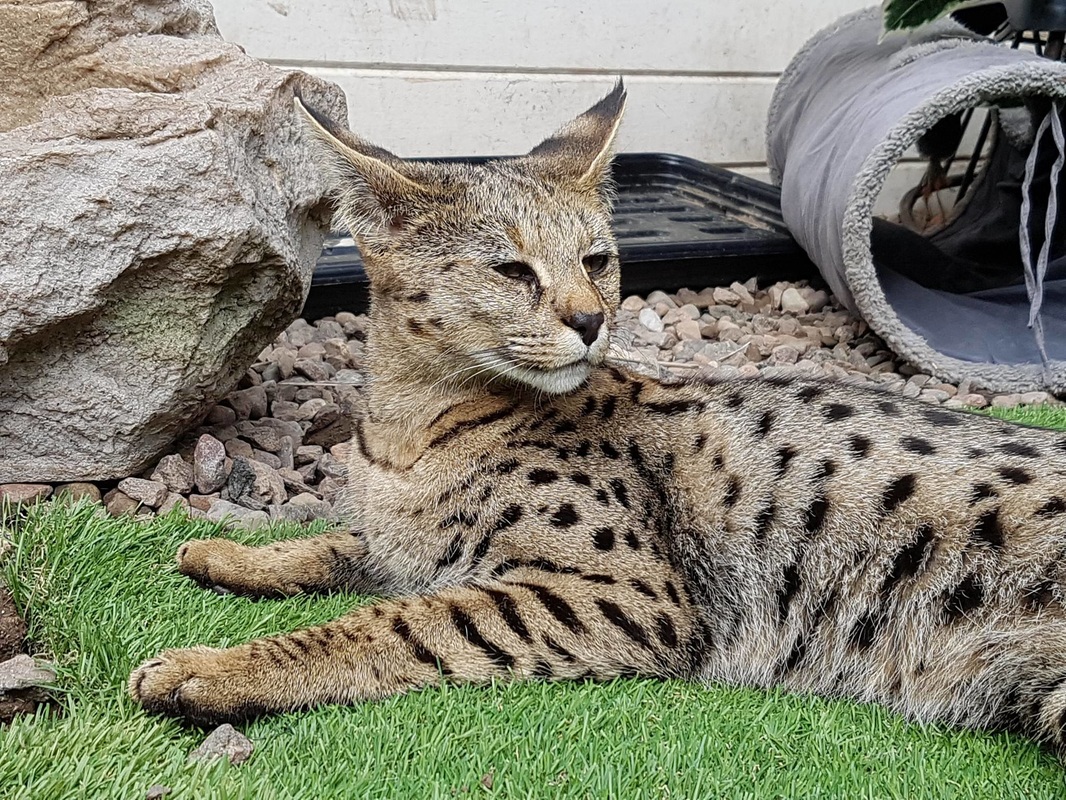


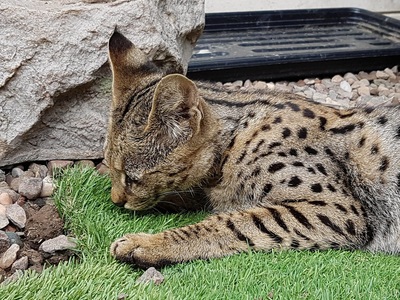

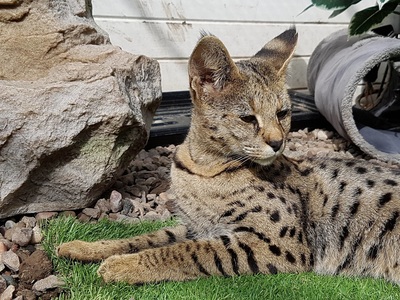
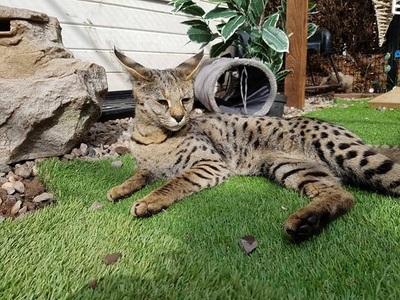
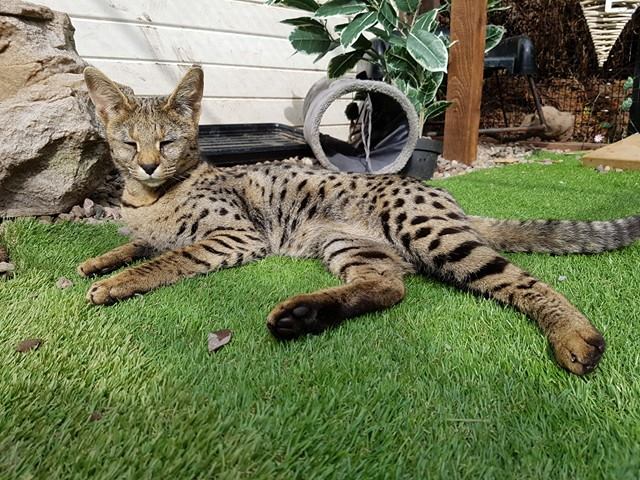
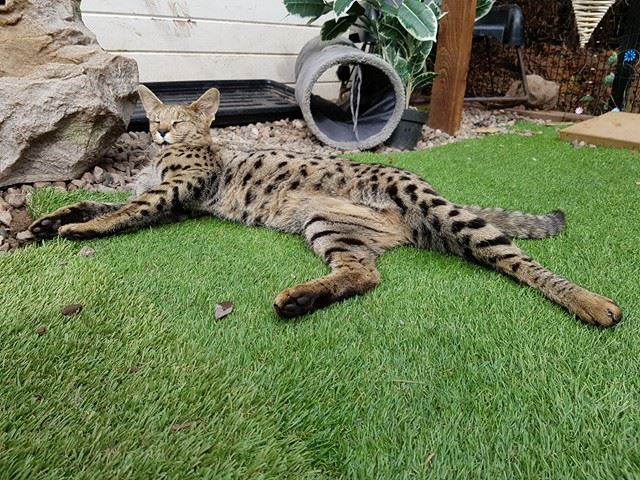




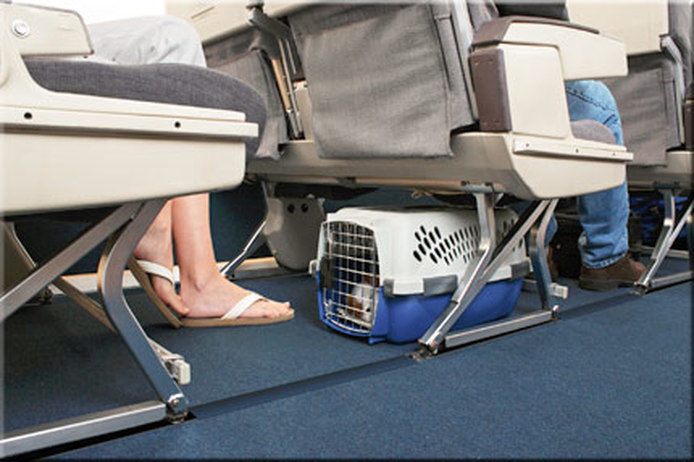
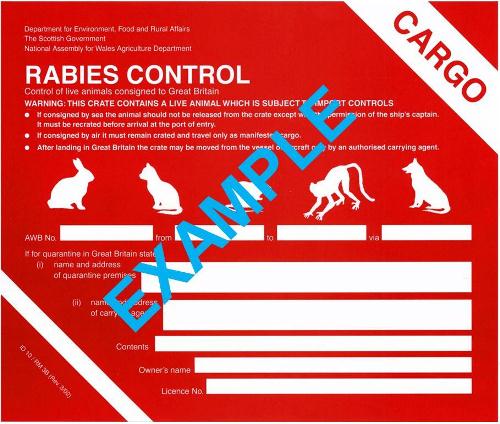

 RSS Feed
RSS Feed
